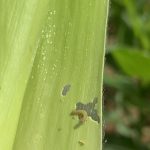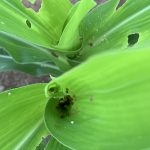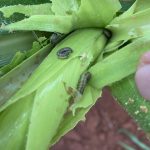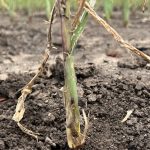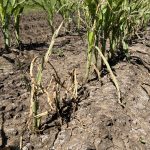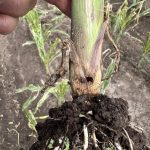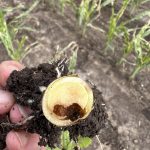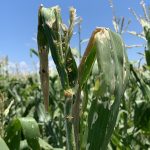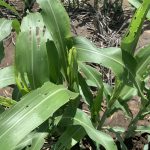- Windowing damage by young larva
- Larvae can hide in the whorl
- Multiple larvae can infest a single plant
- Damage to young plants under high FAW pressure
- Severe and persistent defoliation resulting in stunted plants
- Larvae feeding at the base of plants resulting in the death of the growing point and ingress of pathogens
- Cross section of damage caused by larvae feeding at the base of the plant
- Tassel damage caused prior to emergence by FAW feeding in the whorl
- FAW damage in sorghum.
The field crops that appear to be most attractive to FAW so far appear to be maize and sorghum (including forage sorghum), although it has also been reported in millet, peanuts, mungbeans, soybeans and Rhodes grass.
In horticulture FAW is a major pest of sweetcorn, and has been detected in capsicum, ginger, heliconias, strawberries, womboks, celery, avocados and rockmelon.
A range of grasses are host to FAW overseas; it still remains to be seen what the impact on pastures in Australia will be.
Typical damage symptoms
FAW damage in many crops is similar to that caused by other caterpillars. The larvae can cause defoliation, stem damage or damage to reproductive structures, and can cause significant damage and yield loss in some crops. The amount of damage will depend on the crop stage at which the eggs hatch, the intensity of the infestation, the yield potential of the cropping situation, and a range of other factors, including prevalence of natural enemies.
- Young larvae feed on the leaf surface, causing ‘windowing’.
- In whorl-forming crops such as maize and sorghum, larvae can enter the whorl and cause damage to the emerging leaf, resulting in holes that become larger as the leaf unfurls (see ‘shotgun’ video below). If the damage is severe, and impacts the midrib, large portions of the leaf can break off, further reducing the leaf area.
- Large larvae in whorls can damage tassels (corn) and panicles (sorghum, millet) before they emerge. Large larvae can also move off small plants and shelter in the soil, feeding at the base of plants below the soil surface. In young corn and sorghum crops, this damage can result in seedling death.
Below are some examples of the more commonly found types of damage.
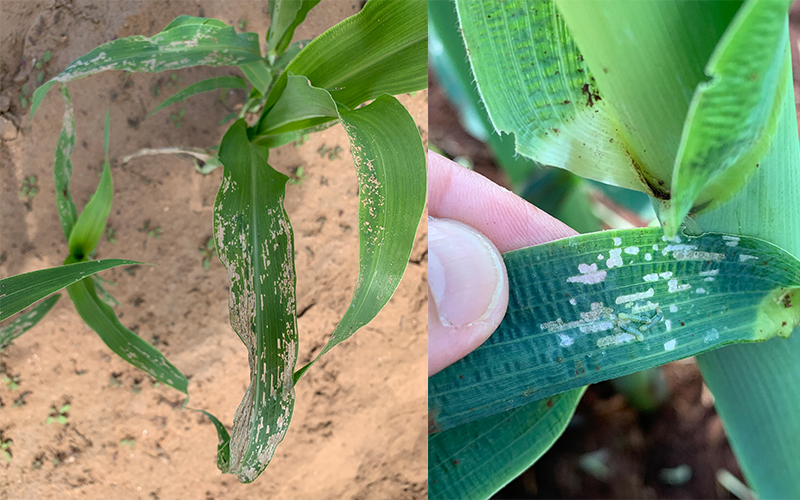
Spodoptera commonly cause ‘windowing’ on the leaves.
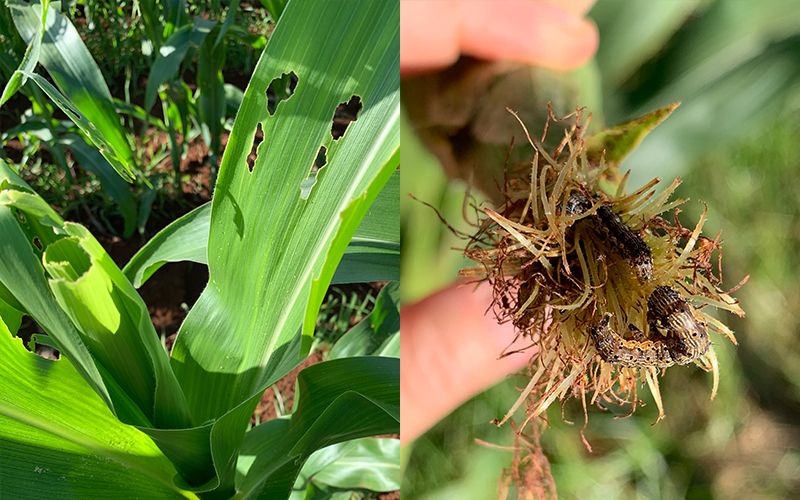
FAW can cause chewing damage to leaves, whorls and reproductive structures.
If you find damage symptoms, carefully examine the plants for larvae to identify which species are present. However, leaf damage will be visible long after larvae have finished their development. The condition of emerging leaves (damaged/undamaged) is a better indicator of an active infestation than damage to fully expanded leaves.
See also:
- FAW identification page
- A Beatsheet article (January 2021) on Detecting FAW in sorghum and corn provides some visual clues for distinguishing between FAW and helicoverpa damage. See also the Identifying larvae in peanuts article (November 2021)
- How do FAW and other caterpillars eat holes in leaves without being seen? Take a look at our short video below on FAW shotgun damage in maize.

